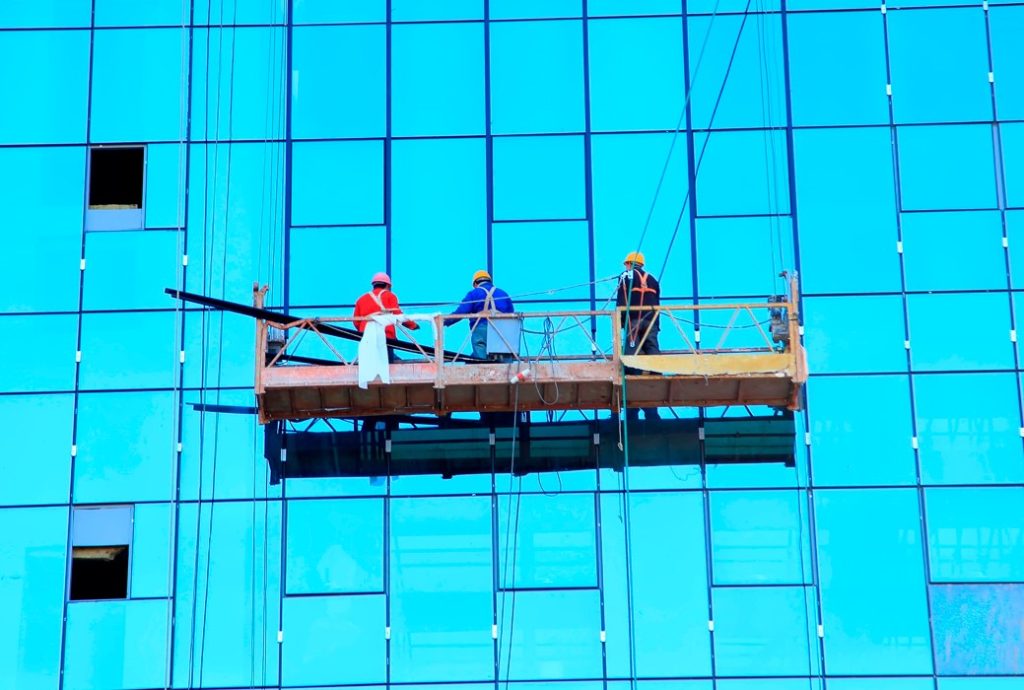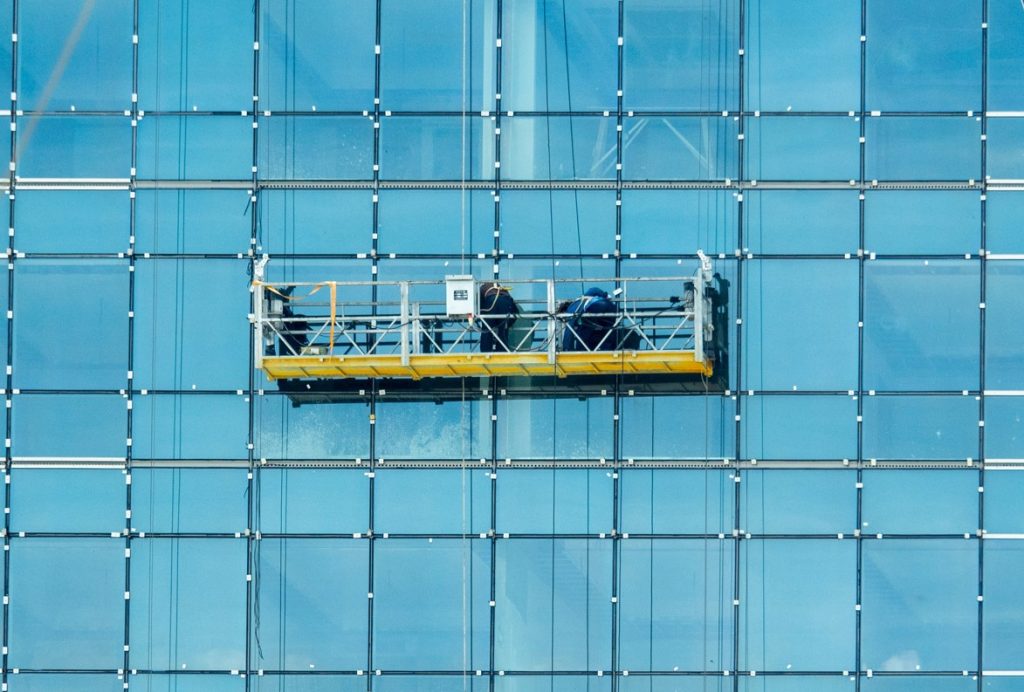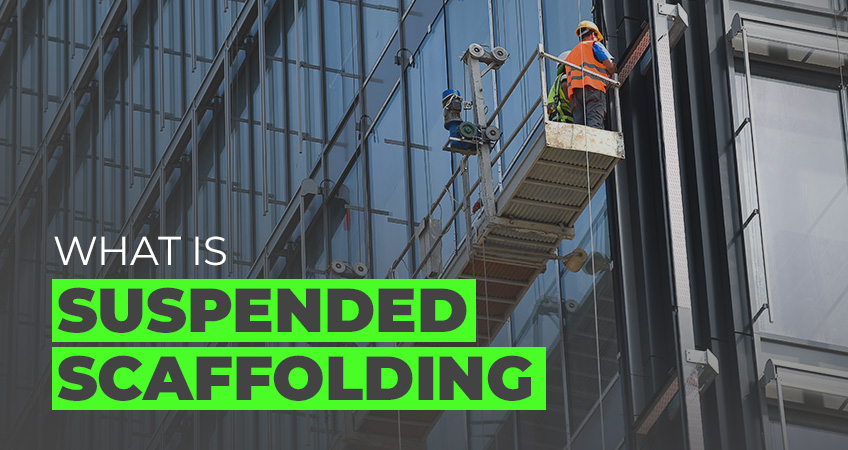If your project involves working at dizzying heights or accessing tricky areas, then suspended scaffolding is your best friend. Offering flexibility, practicality, and safety, it’s a game-changer in construction, maintenance, and beyond.
But what exactly is suspended scaffolding, and why is it so special? This blog walks you through its benefits, common applications, types, and features. Plus, we’ll touch on average suspended scaffolding prices and answer frequently asked questions.
What is suspended scaffolding?

Suspended scaffolding is a type of scaffold that hangs from overhead structures like ceilings or bridge elements, supported by ropes, chains, or cables. You’ll often spot suspended scaffolding on large construction or renovation projects where standard supported scaffolding just doesn’t cut it.
It’s specifically designed to provide access to high, hard-to-reach places, such as elevated ceilings, underneath bridges, or even the sides of skyscrapers.
Advantages of using suspended scaffolding
Access to challenging areas
Have a tough project site? Suspended scaffolding is designed to tackle obstacles like uneven terrain, waterways, traffic routes, or even machinery-filled spaces. Unlike supported scaffolds, which require solid ground as a base, suspended scaffolding components hang securely directly where you need it.
Ideal for high heights
Projects involving tall structures often benefit from suspended scaffolding because it eliminates the need for heavy materials and extensive labour for ground-up builds. Think about it this way: ceiling renovations in a massive venue are far easier to complete when supported by suspended platforms.
Common applications of suspended scaffolding

Suspended scaffolding is like the Swiss Army knife of the scaffolding world. Here are some industries and tasks where it’s the go-to:
Ceiling renovations
When working on towering ceilings in cathedrals, arenas, or industrial manufacturing sites, suspended scaffolding offers hassle-free access.
Bridge maintenance and renovation
From repainting to structural checks, suspended scaffolding makes working underneath or alongside bridges safer and simpler.
Industrial applications
The oil, gas, and chemical industries swear by suspended scaffolds for tasks in shipyards, offshore rigs, and petrochemical plants. They’re invaluable when ground scaffolding just isn’t an option.
Cleaning, inspection, and painting
For jobs requiring lower load-bearing capacities, such as window cleaning or applying coats of paint to tall exteriors, suspended scaffolds are the perfect tool.
Types of suspended scaffolding

Not all suspended scaffolding is the same! Here are the two main types:
Mobile suspended scaffolding
The “nomad” of scaffolding. Mobile scaffolds can move vertically and horizontally, making them perfect for tasks like cleaning glass-covered skyscrapers or repainting building exteriors. They’re easy to reposition, saving time and effort.
Static suspended scaffolding
Static scaffolds remain fixed in place, often suspended from multiple anchor points. They’re ideal for longer projects on high ceilings or during bridge construction, offering a more stable, reliable solution.
Key features of a good suspended scaffold system
Not all scaffolds are created equal! A good suspended scaffold system should have the following features:
- High safety standards: Safety first! A high-quality system ensures workers are always on a secure platform during assembly and use. Swinging and unstable scaffolds are a no-go.
- Minimal tool requirements: The fewer tools you need, the faster and easier the installation. Most modern systems require only basic hand tools.
- Compatibility with modular systems: Systems like modular scaffolds keep costs low and are often far more sustainable. Compatible scaffolding also allows easy integration with other parts.
- Error-reducing assembly: Prefabricated components ensure everything fits perfectly. Systems that do away with tricky couplers or tie wraps reduce errors during setup.
- Appropriate load capacity: Choosing the right load class is crucial. While suspended scaffolds often cater to smaller material storage needs, they handle jobs like painting and inspections with ease.
Suspended solutions – how much does it cost to hire scaffolding?
Suspended scaffolding cost can vary widely depending on your project requirements, materials, and duration of hire.
Here’s a rough breakdown of suspended scaffolding hire costs:
Short-term hire cost
£60–£100 per day
Long-term hire cost
£150–£300 per week, with discounts for extended durations
Custom setups
Prices depend on the size, mobility, and materials required.
For a tailored quote that matches your project’s specifics, don’t hesitate to get in touch with B-Mat Scaffolding. We’re happy to provide free quotes and expert advice!
Frequently asked questions
Can I use suspended scaffolding on small projects?
Yes! While ideal for large industrial tasks, suspended scaffolding works just as well for small-scale projects like exterior repainting or high-ceiling cleaning.
How safe is suspended scaffolding?
Suspended scaffolds are incredibly safe when installed and used correctly. Safety standards are continually improving, and professional scaffolding companies like B-Mat Scaffolding adhere to strict industry guidelines.
Would suspended scaffolding be suitable for a loft conversion?
Yes, suspended scaffolding can be a great option for loft conversions as it allows access to hard-to-reach areas and provides a stable platform for workers to carry out their tasks. It also eliminates the need for ladders or other potentially unsafe solutions. However, it is essential to consult with a professional scaffolding company and ensure that all safety measures are in place before using suspended scaffolding for a loft conversion project.
Can suspended scaffolding be used indoors?
Yes, suspended scaffolding can be used indoors as long as there is enough open space for the scaffold to hang freely without obstruction. This makes it an excellent solution for projects like ceiling repairs or installations where traditional scaffolding may
Can suspended scaffolding handle heavy equipment?
Typically, suspended scaffolds have a lower load-bearing capacity than ground-supported scaffolds. However, they’re well-suited for lighter tasks like cleaning, painting, or inspections.
How quickly can suspended scaffolding be set up?
The setup can be fairly quick, especially when using prefabricated, modular systems. Factors like project complexity and site conditions can affect turnaround times.
What projects benefit most from suspended scaffolding?
Projects involving bridges, high ceilings, industrial maintenance, and high-rise exteriors are where suspended scaffolding truly shines.
What other scaffolding options are available for scaffolding projects besides suspended scaffolding?
Double scaffolding
Double scaffolding, also known as mason’s scaffolding, is constructed with two rows of vertical supports to provide extra strength and stability. It is commonly used in stone masonry, where walls are challenging to penetrate for single scaffolding support.
Steel scaffolding
Steel scaffolding is made from sturdy steel pipes connected with fittings or couplers for enhanced durability. It is ideal for projects requiring heavy loads and high-altitude work due to its strength and fire-resistant properties.
Trestle scaffolding
Trestle scaffolding is supported on movable tripods or ladders and is often used indoors for light work like painting or repairs to ceilings. Its portability makes it a convenient choice for smaller-scale projects.
Cantilever scaffolding
Cantilever scaffolding is used when it is impractical to fix the scaffolding structure to the ground. The scaffolding is supported by needles, which are anchored in the wall through holes. It is frequently employed for constructions needing free ground access, such as when roads or pathways run close to the building site.
Conclusion
Whether you’re repainting a bridge, cleaning high-rise windows, or renovating a cavernous ceiling, suspended scaffolding is an invaluable tool. From its ability to access hard-to-reach locations to the efficiency and cost savings it offers for tall structures, it’s a solution that delivers results every time.
Get a free quote with B-Mat — your trusted local scaffolding company!
At B-Mat Scaffolding, we specialise in suspended scaffolding systems that are safe, cost-effective, and tailored to meet your project’s unique requirements. Our team’s expertise ensures you get the highest standards, every step of the way.


